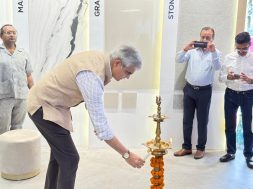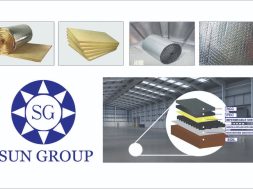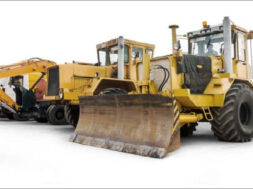As India is cruising in its ambitious road construction and modernisation programme, several issues of great relevance are emerging as challenges and opportunities to the road building professionals. The same have been discussed here in details by Dr. L R Kadiyali, Highway Engineering Consultant and Ms. Sowjanya, Highway EngineerTransport Sector in India: major modes and their roleThe transport sector in any country is closely related to the economy. Development of transport accelerates economic growth, and economic growth creates higher demands for transport. Though India is served by various modes of transport, such as roads, railways, air transport, shipping, inland water transport and pipelines, the dominant modes are the roads and the railways. Between the roads and the railways, there has been a marked shift from rail to road over the past several decades. Whereas the rail share was 90 per cent in freight and 74 per cent in passenger movement in 1951, the rail share has declined to about 40 per cent in freight and 20 per cent in passenger movement now (Ref 1). This shift has taken place because of several advantages road transport has such as flexibility, door-to-door service and speed. But, it needs to be noted that road transport has several disadvantages such as a poor safety record, high pollution it causes and it dependence on petroleum crude based fuel whose availability world-wide in the future years is in doubt. All the same, these disadvantages can be overcome, and road transport has a potential for high growth rate in the coming years. It is poised for a four to five fold increase in the next 20 years.
Current status of the road sector in India India has a road network of 3.3 million kilometres, second only to U.S.A’s 6.5 million kilometres (Ref 2). The car ownership rate in India is only 8 as against USA’s 443 per 1,000 persons. This shows that as India’s economy grows, the number of vehicles on the road will increase at much higher rate, possibly in the range of 10-15 per cent per annum. This will result in the vehicle population doubling every 5-7 years, causing great pressure on road space.
Only a half of India’s roads are paved, the other half being only earthen tracks. Merely 54 per cent of India’s villages were accessible by an all-weather road till recently (Ref 3). According to a long-term perspective plan for rural roads (Ref 3), all habitations with population above 250 will be connected by an all-weather road by the year 2022. The outlay involved will be ` 55,200 crore.
The long-term plan for roads prepared by the Indian Roads Congress (Ref 1) has laid down the following targets for the road network for the year 2021.
Expressways
15,766 kms, a steep rise from the present 200 kms
National Highways
80,000 kms, as against the present length of 70,548 kms
State Highways
1,60,000 kms, as against the present length of 1,24,300 Km
Major district roads
3,20,000 kms
These are very ambitious targets, involving an outlay of Rs. 2,00,000 crore. Thus, the road sector will witness an outlay of Rs. 2,55,000 crore in the period 2001-2025.
The road network in the country suffers from various deficiencies such as inadequate width, roads with pavement of sub-standard thickness, poor geometrics, low riding quality, weak and narrow bridges and culverts, absence of bypasses at towns and cities and absence of safety measures like signage and road markings. As a result, the country suffers an annual economic loss of nearly Rs. 30,000 crore by way of fuel wastages, wear and tear of vehicles and tyres and low speeds (Ref 4). As the country marches ahead in its ambitious road construction and modernisation programme, several issues of great relevance present themselves, posing daunting challenges and opportunities to the professionals in the sector. These are discussed below.
Pavement choice Highway pavements constitute nearly 50-60 per cent of the cost of a highway and hence careful attention is needed in their choice. Pavements are of two types, viz. flexible pavements with a bituminous surfacing and cement concrete pavements. In the past, the choice was invariably a flexible pavement because of various factors such as paucity of funds (flexible then being cheaper in initial cost), amenability to stage construction (adding pavement layers in stages as traffic develops) and the serious shortages of cement. The conditions now have vastly changed. Cement is available in plenty, whereas bitumen (a by-product of the petroleum crude distillation process) is likely to become scarcer in the coming years due to the dwindling petroleum crude reserves worldwide. The country faces the serious problem of overloading of trucks and flexible pavements cannot withstand such severe punishment and develop ruts & cracks soon after construction. The cement concrete pavements have other superior advantages such as long life (30-50 years), practically maintenance free performance, a saving of 15 per cent of diesel consumed by commercial vehicles, a saving of 50 per cent of diesel in production of concrete mix as compared to hot asphalt mix, a saving of 10 per cent of electricity needed for street-lighting and about 30-40 per cent saving in the quantity of stone aggregates. Besides, at current rates of cement and bitumen, a concrete pavement for high traffic highways is in fact cheaper than a flexible pavement (Ref 5). Thus, for future roads, a cement concrete pavement is a better choice. It is also advisable to convert existing bituminous surfaced roads to a concrete pavement by white-topping (Ref 6), so that the future uncertainty associated with bitumen availability and its rising price will be taken care of.
Sustainability of road construction In 2010, it has been estimated that about 160 mil cubic metres of stone aggregates will be required every year by the road sector for construction and maintenance, which will increase to 450 mil cubic metres in the year 2030 (Ref 7). These are huge quantities, and exploiting the stone quarries to such as an extent will result in total depletion of stone aggregates soon. Ways must be found to reduce the consumption of stone aggregates. Cement concrete roads save about 30 to 40 per cent of stone aggregates. Soil-stabilisation with cement, lime, fly-ash and other modern chemical stabilisers is another option to save stone aggregates.
Neglect of road maintenance The funds allotted for road maintenance are inadequate, the shortfall being 40 per cent in respect of National Highways (Ref 1), and undoubtedly even more in respect of State roads. Fig 1 gives the neglected state of a village road in Punjab, a State which took up the ambitious programme of connecting every one of its villages by an all-weather road, leading to the Green Revolution.
The government and policy makers must take a serious note of the neglected maintenance, and the loss of assets created at great lost.
Poor road safety recordIndian roads have a poor safety record. A recent study has estimated that 1,42,350 people die every year due to road accidents, and the cost of valuable lives and property lost is Rs. 22,750 crore every year (Ref 8). This is a serious issue, and deserves the attention of professionals who should incorporate adequate safety features in the roads such as good geometrics, segregation of pedestrians and cattle from traffic. Wherever possible, well-designed intersections, provision of reflective road signs & markings, strict enforcement of speed controls, and road user education can bring down the accident numbers substantially.
Quality of construction It has been noted that the quality of construction of roads being constructed is below acceptable standards. Pavements show distress of various types soon after construction. Figures 2, 3 and 4 show some of the serious deficiencies observed in some of the recently constructed National Highways.
It is obvious that the contracting industry and the supervising engineers of the road authorities have to take good precautions to ensure that the roads are constructed strictly according to prescribed specifications and quality.
Contracting industry With a huge programme of road building programmed for the coming decades, the contracting industry needs to build up its capacity, adopt new technologies, employ qualified staff and procure modern equipment. To ensure that only competent contractors bid for projects, a system of pre-qualification of bidders should be implemented. Equipment on lease should be made available for those contractors who do not possess the equipment of their own. The contract conditions should be standardised in conformity with international practices, so that disputes do not arise, and if they do arise they are resolved expeditiously and to the satisfaction of all parties.
Consultancy sector As the road construction activity grew in India during the last 25 years, the design and construction supervision of highway projects, which used to be looked after by the State P.W.Ds, is now increasingly being transferred to consultants. Consultants are now being employed for planning, designing, and supervising construction of roads. This is a healthy trend and has yielded good results. The sector should be given encouragement and made to prosper and grow.
Human resourcesA good system of delivery of road projects needs good human resource at various levels such as:• Engineers for design• Engineers for construction• Engineers for supervision of construction• Foremen and Technicians for handling construction equipment and activities• Laboratory Technicians• Financial Experts• Research Scientists.
It is noticed of late that civil engineers who are the back-bone of road construction are in short supply as young engineers opt for IT-enabled sectors. This trend needs to be remedied.
The personnel in the road sector need to be trained and retrained to keep themselves well-informed of the fast evolving technology.
Funding options The traditional source of funding for the road infrastructure projects has been the government budget. Since there are competing demands from various sectors from the government budget, non conventional options such as the involvement of the private sector (PPP-Public Private Partnership) shall have to be explored. Various models such as the BOT (Build Operate and Transfer), DBFOT (Design, Build, Fund, Operate and Transfer), Annuity Payments and Viability Gap Funding shall have to be followed. Toll collection will be a source of recoupment of funds invested by the entrepreneur. Maintenance of roads can also be done through PPP, adopting Performance Based Maintenance Contracts.
Environmental concernsRoad construction and road transport operations have adverse impact on the environment. Pollution and noise are matters of serious concern. Sedimentation and defilement of water bodies caused by indiscriminate digging of borrow pits should be avoided. The cutting of trees while road widening must be addressed by adequate plantations. The resettlement and rehabilitation of affected citizens during acquisition should receive high priority. The concept of ‘Green Highways’ should be adopted by the road sector.
Conclusion Road construction is poised for a major jump in the coming years. This is attended by various issues, concerns and problems that need adequate attention. The challenges are daunting, but the opportunities for the professionals are exciting and rewarding. n
References1. Road Development Plan, Vision 2021, Indian Roads Congress, New Delhi, 20012. Britannica Book of the year, 2010, Encyclopaedia Britannica, Chicago, 20103. Rural Road Development Plan: Vision 2025, Ministry of Rural Development, New Delhi, 20074. Report in the Times of India, Delhi Edition, dated 15th August 20115. Soft-ware developed by the Cement Manufacturers’ Association, New Delhi, 20096. Concrete Overlays-White-topping of Roads, Cement Manufacturers’ Association, New Delhi, 20057. Vishwas M, Pradeep Kumar, Sowjanya and L.R. Kadiyali, Some Issues Pertaining to Sustainability of Road Transport Operations, Road Construction and Maintenance in India over the Next Twenty Years, Paper submitted to the Indian Roads Congress, New Delhi, 20118. Kadiyali, L.R. and Sowjanya, Cost of Road Accidents in India, Paper presented at the 4th National Indian Roads Conference 2011, New Delhi, 2011
AuthorsDr. L.R. Kadiyali holds a PhD degree in Civil Engineering and has over 50 years of professional experience in the roads sector. He served in various capacities in the Roads Wing of the Ministry of Transport, retiring as Chief Engineer. He was the Study Director of a World Bank funded major research project known as the Road User Cost Study. He now heads his own consultancy firm. He has authored several papers, receiving awards for some of them. He is the author of a book on Highway Engineering and another on Traffic Engineering. Recognising his contribution to concrete pavement technology in India, he has recently been elected as an Honorary Member of the American Concrete Pavement Association, and has been awarded the Life-Time Award by the Indian Concrete Institute.
Miss Sowjanya holds a Bachelor’s Degree in Civil Engineering and is currently working as an associate consulting engineer in the consulting firm, L.R. Kadiyali and Associates. She has been involved in several prestigious projects such as the master plan for roads of U.P., white-topping of roads in Hyderabad, Jharkhand and Karnataka. She has co-authored a paper on Road Accident Costing.
Cookie Consent
We use cookies to personalize your experience. By continuing to visit this website you agree to our Terms & Conditions, Privacy Policy and Cookie Policy.









